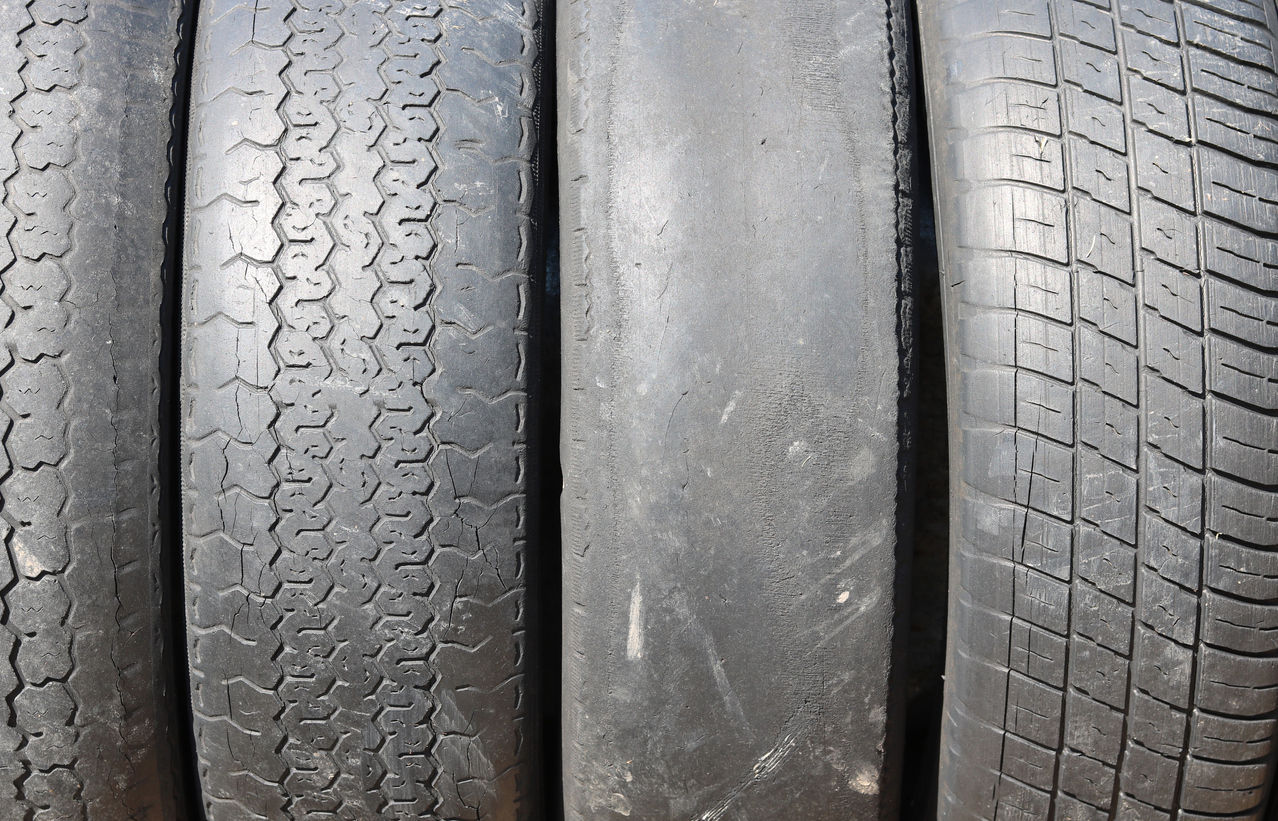What is a bald tyre?
Author Name –
Louise Helsby
03 Sep 2019
19 people

Tread depth is one of the most important features of a tyre when it comes to safety, providing grip to the road surface and preventing your vehicle from losing traction. The more a tyre is used though, the more the tread is worn away. If you didn’t replace them, eventually your tyres would degrade down to the point where they’re considered bald tyres, and that’s not good news for your safety on the road.
What is a bald tyre and how exactly are they dangerous? We’re here to answer those questions and more.
Bald Tyres
A bald tyre is one that has seen so much use that its rubber has gradually been worn down through contact with the road, reducing tread depth to a dangerously low level and exposing the tread wear bars. In the worst cases, a bald tyre might have no tread at all and will be smooth, drastically affecting its ability to create friction with road surfaces.
All new car tyres have tread to provide the friction that keeps the vehicle on the road. If produced without tread, tyres might fare OK in dry conditions, but wet roads would present serious issues as the water creates a lubricated film between the tyre and road. Tread patterns counter this potential problem with recesses into which water can be squeezed as the tyre is driven over the road.
However, even the best car tyres with modern full depth tread will eventually degrade through use, as the stress of the friction that’s generated through the contact between the tyre and road erodes the rubber layer by layer.
When this happens, the depth of the recesses in the tyres that make up the tread pattern is reduced, and the tyre’s ability to provide adequate friction on wet roads deteriorates. A tyre is considered bald when the tread wear bars – perpendicular rubber bars built into new tyres – are flush with the surface of the tread.
What do bald tyres look like?
There are varying degrees of severity of tyre baldness: at its least serious tyre baldness can simply mean that the tread wear bars have been reached, at its most serious a bald tyre can be completely degraded down to a smooth surface.
You’ll know when the tread wear bars have been reached because they’ll be at the same level as the rest of the remaining tread, making contact with the road as the tyre rotates. Reaching your tread wear bars means that you should immediately replace your tyres to avoid falling beneath the legal tread depth limit of 1.6mm.
A completely bald tyre will be smooth, with little to no sign of a tread at all. This point should never be reached, as tyres should be replaced long before the tread depth falls below 1.6mm. Fully bald tyres are extremely dangerous to drive on.
What are the dangers of bald tyres?
- The most likely danger of driving with bald tyres is aquaplaning on wet roads. No tread on a tyre means that there’s nowhere for the water to go, and it instead creates a lubricated film between the tyre and road.
- Similarly, a lack of tyre tread means that tyres are less effective at gripping to roads covered in snow or ice. Without tread, tyres can’t displace the snow beneath them.
- Bald tyres are more susceptible to punctures, as the grooves and ridges in healthy tread provide some level of protection from glass or other sharp objects on the road.
- Bald tyres lose tyre pressure more quickly, which can in turn affect how fuel efficient your car is and how well it performs.

Louise Helsby
Did you enjoy this blog post?
|
19 people found this review helpful